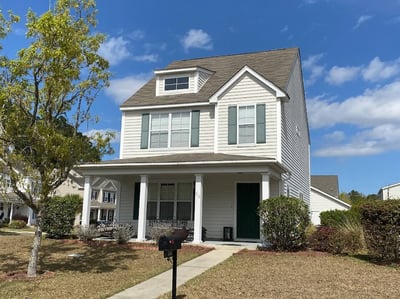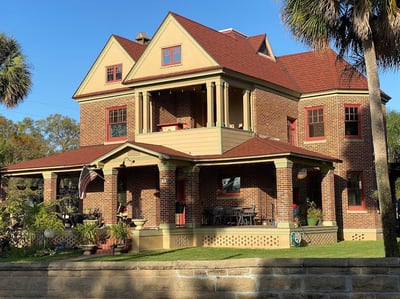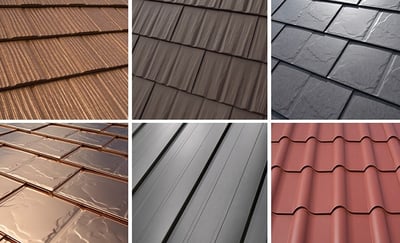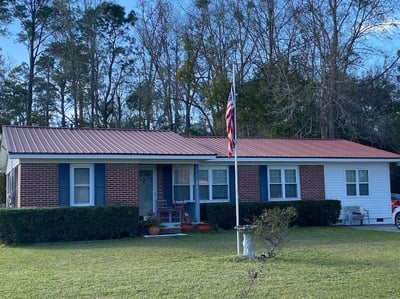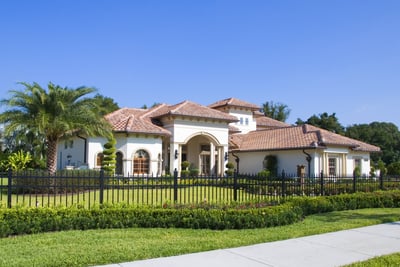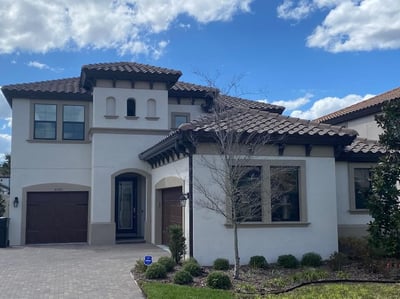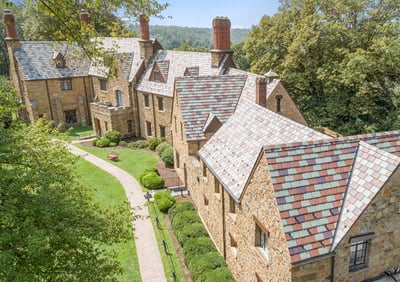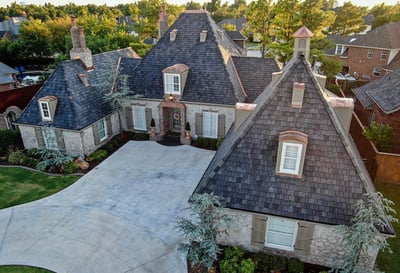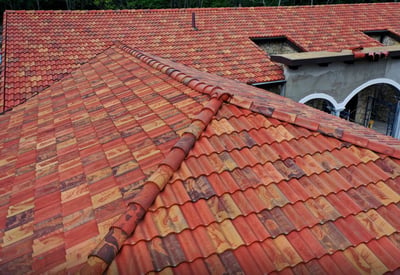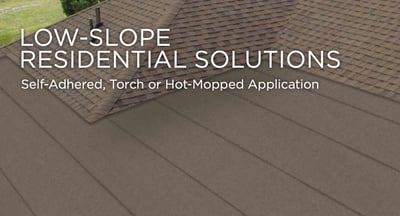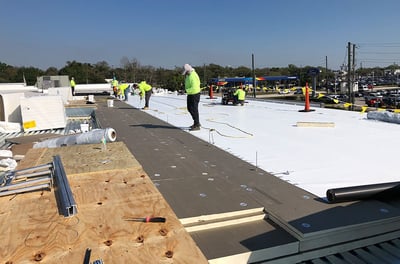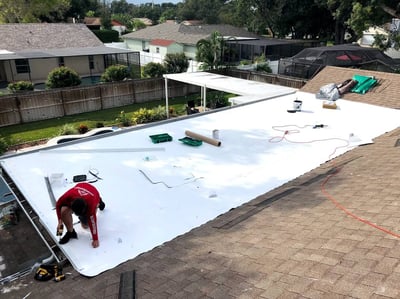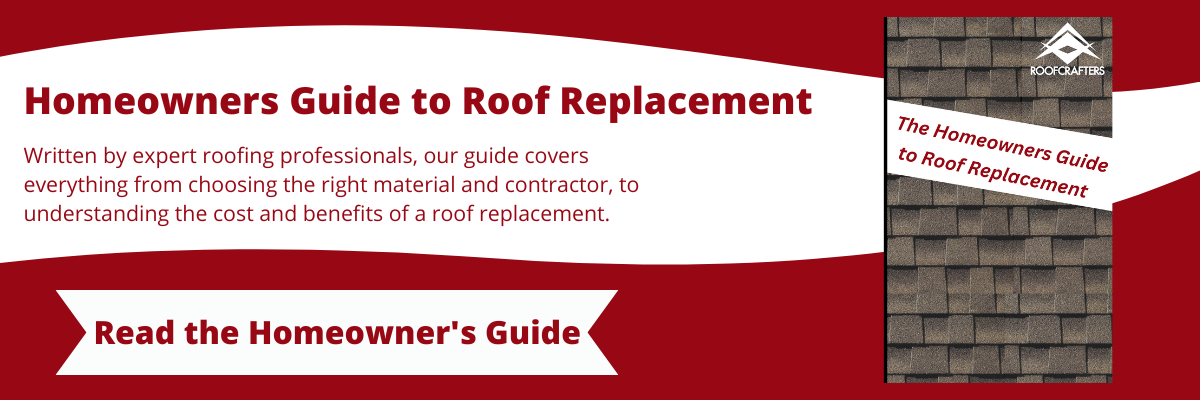The Cost of Roof Replacements in 2024: What You Need to Know
January , 2024 | 32 min. read
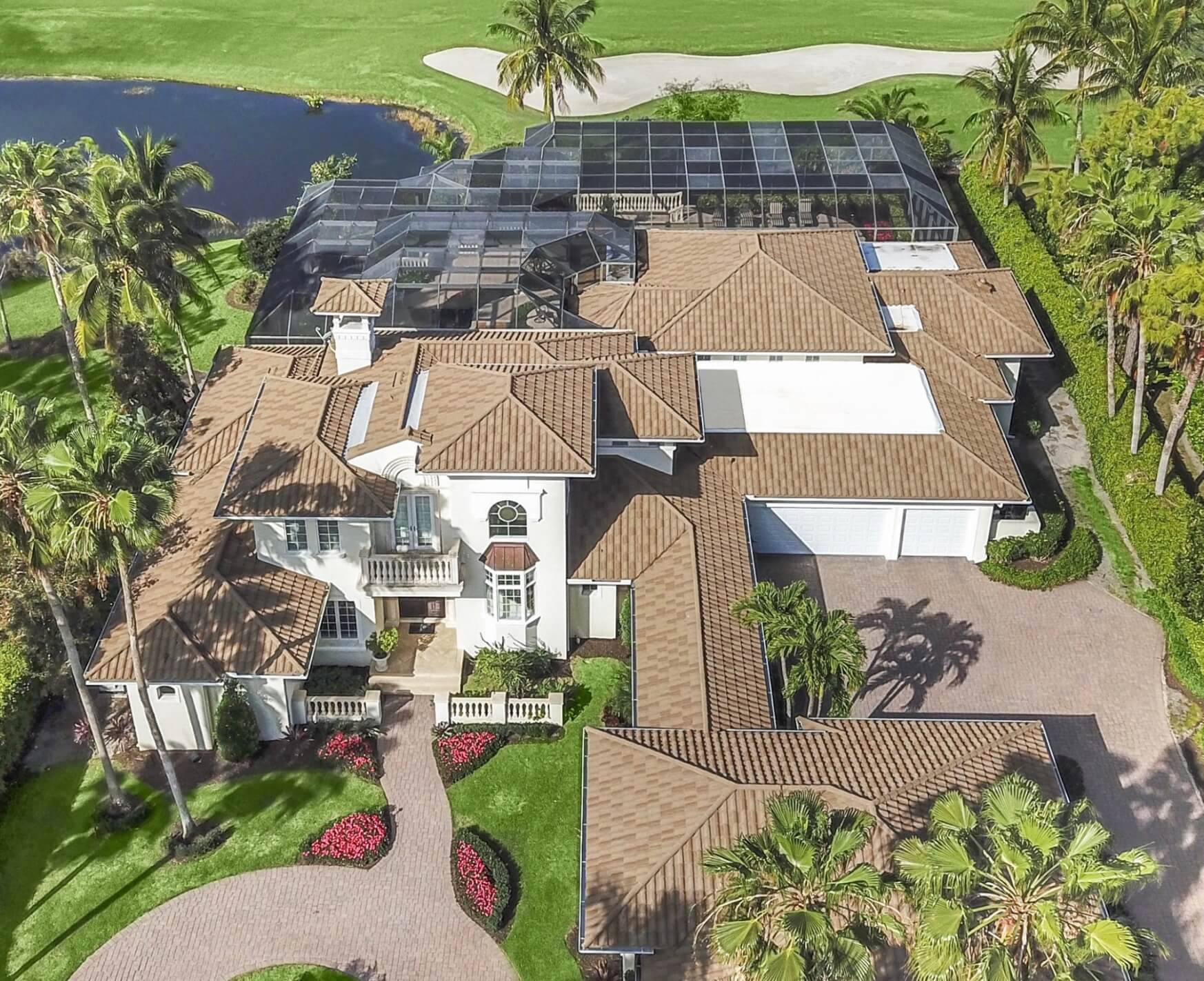
Are you tired of feeling like you're playing guessing games with your roof replacement budget?
Do you find yourself wondering how much you'll need to spend on materials?
We get it. Understanding the ins and outs of the roofing materials can be overwhelming.
As roofing professionals with 3 decades of experience, RoofCrafters has just about seen it all. From budget-friendly options to the priciest materials on the market. We've helped countless homeowners make informed decisions about their roofing projects. And now, we're bringing that expertise to you. So sit back, relax, and let's take a peek at the most widely sought-after roofing materials in 2024.
In this article, we'll be breaking down the pros, cons, and costs of roofing materials in 2024. And hopefully, by the end, you'll have a better understanding of the different materials options available.
So let's dive right in.
5 Factors that Play a Key Role in the Cost of Roof Replacements in 2024
We understand your budget is at the top of the list when it's time to replace a roof. But when it comes to costs, there's a lot more to consider than just the materials. It's like a puzzle, and each piece plays a role in determining the final cost.
So, let's break it down, shall we?
- Type of Material: Of course, the type of material you choose will have a big impact on the overall cost. Some materials, like asphalt shingles, are more budget-friendly. While others, like clay tiles, are more expensive. It's important to choose a material that fits both your style and your budget.
- Quality of Materials: The quality of the materials you choose can also impact the cost. Just like a fancy suit vs. gym shorts and a tank top, you'll pay more for a higher-quality roof.
- Roof Complexity: The complexity of your roof can also impact the cost. If your roof is flat and easy to access, it will likely be less expensive to install than a roof that is steep with multiple angles and valleys.
- Labor Costs: Labor costs can vary greatly depending on where you live. In some areas, roofing labor is more expensive, while in others, it's more affordable. Some roofers charge cheap and do cheap work. This is just one more reason why it's important to interview roofers and get multiple quotes before making a decision.
- Waste Management: Don't forget about waste management! Disposing of old roofing materials and debris can add to the cost of a roofing project. But don't worry, we won't make you take out the trash.
So, there you have it. These are just a few of the factors that impact the cost of roofing. It's important to consider each of these when making a decision.
Take your time and get multiple estimates, we recommend getting at least 2 or 3 estimates to ensure you get the highest quality materials and installation.
The Cost of 16 Popular Roof Replacements in 2024
- 3-Tab Shingles
- Architectural Shingles
- Designer Shingles
- Metal Roofing
- Screw-Down Metal
- Standing Seam metal
- Stone Coated Steel
- Clay Tiles
- Concrete Tiles
- Wood Shingles and Shakes
- Synthetic Slate Shingles
- Synthetic Wood Shingles
- Synthetic Spanish Tile
- Mod-Bit (rubber roof)
- PVC Roofing
- TPO Roofing
3-Tab Asphalt Shingles: Pros, Cons, and Cost
3-Tab Shingles are a cost-effective roofing option. They're often used due to their affordability, durability, and ease of installation. They are flat shingles that have 3 tabs that create a uniform look on the roof.
Pros:
- Affordable: 3-Tab shingles are typically the cheapest type of asphalt shingles. They're an economical choice for homeowners and home builders.
- Widely Available: 3-Tab shingles are widely available and can be purchased at most home improvement stores.
- Easy to Install: They are easy to install, making them a popular choice for DIY roofing projects.
Cons:
- Shorter Life Span: 3-Tab shingles have a shorter life span. Compared to other types of asphalt shingles and need to be replaced more frequently.
- Limited Style Options: They offer limited style options and are not as customizable as other types of roofing materials.
- Not Suitable for Harsh Weather: 3-Tab shingles are not suitable for high winds, and extreme temperatures. Which can cause them to crack or break and blow off.
Cost:
Average home runs between $7,300 and $10,600
Architectural Asphalt Shingles: Pros, Cons, and Cost
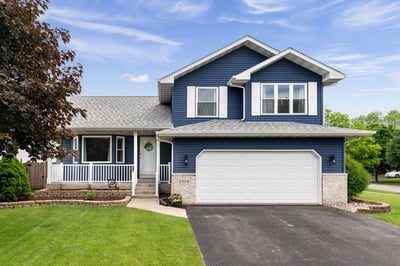
Architectural asphalt shingles are a premium type of asphalt shingle that offers a more dimensional, textured look for a roof. They are made of multiple layers and have a thicker, sturdier construction than traditional 3-tab shingles.
Pros:
- Long lifespan: Architectural shingles typically last longer than 3-tab shingles and can have a warranty of up to 50 years.
- Aesthetic appeal: The textured look of architectural shingles can enhance the overall appearance of a home. This increases home values by adding curb appeal.
- Durability: The heavier construction of architectural shingles can withstand heavy wind and rain. They're a good option for homes in areas with harsh weather.
Cons:
- Cost: Compared to 3-tab shingles, architectural shingles are more expensive. They're a pricier option for those on a tight budget.
- Heavier weight: The extra thickness and layers of architectural shingles add more weight to a roof. It's important to ensure your roof structure can handle the added weight before choosing this type of shingle.
- Not unique: Architectural shingles are now considered basic shingles. Every home has them.
Cost:
Average home runs between $11,200 and $19,000
Designer Shingles: Pros, Cons, and Cost
Designer asphalt shingles are a premium type of asphalt shingles that offer a more decorative look for your roof. They come in a wider range of colors, patterns, and styles. Allowing for a more personalized and unique appearance for your home.
Pros:
- One-of-a-kind: Wide range of styles and colors, allowing for a personalized look
- Longevity: Durable and long-lasting with a longer warranty compared to traditional asphalt shingles
- Value: Cost-effective alternative to higher-end roofing options
Cons:
- Pricey: More expensive compared to traditional asphalt shingles
- Loss of color: Can fade or discolor over time, impacting the aesthetic appearance
- Installation cost: Higher installation costs. Designers require specialized installation techniques.
Cost:
Average home runs between $18,300 to $29,100
Metal Roofs: Pros, Cons, and Cost
Metal roofs are made from a variety of materials including steel, aluminum, copper, and zinc. They're known for their durability and long lifespan. (often over 50+ years) Due to their resistance to fire, wind, and extreme weather conditions.
Pros:
- Durable and long-lasting: Metal roofs can withstand harsh weather conditions. They have a longer lifespan compared to other roofing materials.
- Energy-efficient: Metal roofs reflect heat from the sun and can help reduce cooling costs during the summer.
- Fire and wind resistance: Metal roofs are non-combustible and can withstand strong winds. This makes them a great choice for areas prone to natural disasters.
- Low maintenance: Metal roofs need very little maintenance and are resistant to insects, rot, and mold.
Cons:
- Initial cost: The upfront cost of a metal roof is generally higher than that of other roofing materials.
- Noise: Metal roofs can be noisy during rain or hail, but sound-deadening insulation can help to reduce the noise.
- Installation: Metal roofing requires specialized installation techniques. So it is important to work with a qualified metal roofing contractor.
- Dents: Metal roofs can become dented if hit by large hail or tree limb debris.
Cost:
Average home runs between $16,500 to $48,300
Exposed Fastener Metal Roofing: Pros, Cons, and Cost
Screw-down metal roofs are a type of metal roofing system that uses screws to attach panels directly to the roof deck. They're a popular choice for residential and commercial properties. Their durability, longevity, and energy efficiency make them a popular choice for many property owners.
Pros:
- Durable: Metal roofs are known for their durability and resistance to weather, wind, fire, and impact. Screw-down metal roofs are even stronger as they are attached directly to the deck.
- Wind resistant: Screw-down metal roofs won't blow off in a high wind storm due to their secure installation.
- Energy efficient: Metal roofs reflect sunlight. This reduces the amount of heat absorbed by the roof and reduces the cooling costs of the building.
- Eco-friendly: Metal roofs are recyclable, making them an eco-friendly roofing choice.
- Variety of colors and styles: Screw-down metal roofs come in a wide range of colors and styles. Allowing homeowners to choose the look that best suits their taste.
Cons:
- Higher cost: Compared to other roofing options, screw-down metal roofs are more expensive.
- Noise: Metal roofs can be noisy during rain or hail storms.
- Difficult to install: Installing screw-down metal roofs requires specialized skills and tools. This can make it a challenging task for DIY enthusiasts.
- Expansion and contraction: Metal roofs can expand and contract with temperature changes. This thermal movement can and will cause screws to loosen over time and need maintenance.
Cost:
Average home runs between $16,500 to $31,700
Standing Seam Metal Roof Replacement: Pros, Cons, and Cost
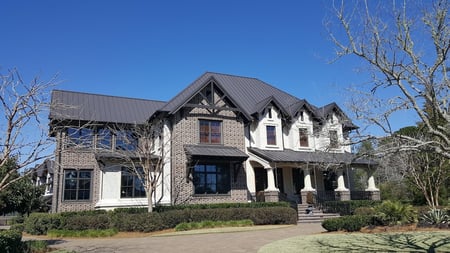
A standing seam metal is a type of metal roofing that features raised, vertical seams that connect adjacent metal panels. The panels are typically made of either aluminum or steel and come in various widths and lengths to suit different roofing needs. The panels are securely fastened to the roof deck with concealed clips. this creates a smooth, uninterrupted appearance.
Pros:
- Durability: Standing seam metal roofs are known to last up to 50 years or more, making them a great long-term investment.
- Energy Efficiency: Metal reflects a large portion of the sun's energy. Metal roofs are more energy efficient than other roofing types, reducing cooling costs in hot climates.
- Weather Resistant: Standing seam metal roofs are impervious to wind, rain, snow, and fire.
- Environmentally Friendly: Metal roofing can be recycled and is made of up to 90% recycled content. It's a sustainable and environmentally friendly roofing option.
- Aesthetically Pleasing: Standing seam metal roofs come in a variety of colors and styles. Allowing homeowners to choose a roof that complements their home's architecture.
- Low Maintenance: Because of the concealed fastener method. Standing seam metal roofs have little maintenance needed.
Cons:
- Upfront cost: Standing seam metal roofs are more expensive than traditional roofing options.
- Complexity: The installation process of a standing seam metal roof can be more complex than other roofing options. They do require special tools and knowledge.
- Noise: Some people may be concerned about the noise created by rain or hail hitting a metal roof.
- Looks: Metal roofing can look commercial and therefore less appealing than other roofing options.
Cost:
Average home runs between $27,500 to $48,300
Stone-Coated Steel Shingles: Pros, Cons, and Cost
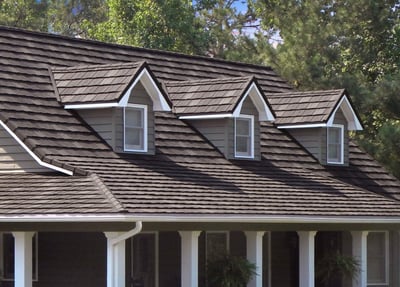
Stone-coated steel roof is a type of metal roofing with 5 layers of coating. It is designed to mimic the look of traditional shingles, shakes, or tiles but with the added durability and resistance of steel.
Pros:
- Durability: Stone-coated steel shingles are highly resistant to fire, wind, and impact. They're a great choice for homes in areas with harsh weather.
- Energy Efficiency: The steel material used in this type of roofing reflects sunlight and heat. By reducing cooling costs in the summer, you'll save money.
- Longevity: With proper maintenance, stone-coated steel shingles can last upwards of 50 years or more.
- Easy Installation: These shingles are light and easy to work with. The installation process is less time-consuming and more efficient.
- Curb Appeal: Being unique, stone-coated metal will provide extra value as an upgraded material option by enhancing your curb appeal.
Cons:
- Cost: Compared to other roofing options, stone-coated steel shingles can be more expensive upfront.
- Heavy Weight: the shingles themselves are lightweight. However, the steel panels that make up the roof can be heavy and may need added support.
- Limited expert installers: Stone-coated steel shingles are not available in all areas. The installation process requires specialized metal skills and equipment.
- Noise: Steel roofs can be noisy during heavy rain or hailstorms, which may be a problem for some homeowners.
Cost:
Average home runs between $31,000 to $58,000
Clay Tile Roof Replacement: Pros, Cons, and Cost
Clay tile roofing is a traditional roofing material that has been used for centuries in various countries. The clay tiles are made by molding clay into specific shapes, and then firing the clay at high temperatures to produce a strong, durable tile. The tiles are then laid on the roof and secured in place to form a weather-resistant barrier.
Pros:
- Durability: Clay tiles are known to last for a long time, often for many decades, making them a great investment for homeowners.
- Natural insulation: The material has natural insulation properties. This helps to keep the interior of a home cool during warm months.
- Weather resistance: Clay tile is resistant to extreme weather conditions such as heavy rain, high winds, and hail, making it an ideal choice
Cons:
- Cost: Clay tile roofing is often more expensive than other roofing materials. The tiles themselves and the cost of installation.
- Weight: Clay tiles are heavy and require a solid roof decking to support them, which can increase the cost of installation.
- Maintenance: Clay tile roofing requires regular maintenance to keep it in good condition. Including mortar repairs, sealing, and cleaning.
Cost:
Average home runs between $35,200 to $69,800
Concrete Tile Roofing: Pros, Cons, and Cost
Concrete tile roofing is a popular choice among homeowners because of its durability and versatility. Concrete tiles are made of a mixture of cement, sand, and water. And then they're molded into a variety of shapes and sizes to create a roofing system that is both functional and attractive.
Pros:
- Durability: Concrete tile roofing is highly resistant to wind, hail, and fire. It's a great option for homeowners in areas that are prone to severe weather conditions.
- Energy Efficiency: Concrete tiles have insulating properties that help reduce energy costs. They're a cost-effective roofing option over the long term.
- Aesthetics: Concrete tile roofing comes in a variety of colors, textures, and shapes. This allows you to choose the look that best complements your home’s style.
Cons:
- Weight: Concrete tiles can be heavy, so it is important to ensure that your home’s roof structure is strong enough to support the weight of the tiles.
- Cost: Compared to other roofing materials, concrete tile roofing can be more expensive.
- Installation: Installing a concrete tile roof requires specialized skills. It's important to work with a skilled and experienced contractor.
- Maintenance: To get the most out of a concrete roof system. You'll need to perform regular maintenance
Cost:
Average home runs between $33,700 to $65,500
Wood Shake Roofing: Pros, Cons, and Cost
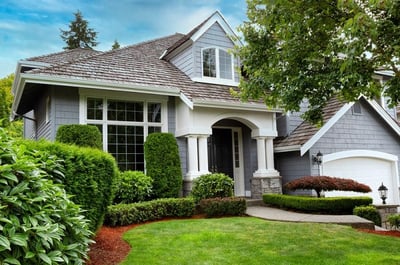
Wood shingle or wood shake roofs are made from cedar, redwood, or pine. They give homes a rustic and natural look. They perform best in drier or less humid regions. Like slate, it's another real natural material installed on roofs
Pros:
- Energy efficient: Wood shingles or shakes provide excellent insulation to homes.
- Add value: They have a natural look that can add to the aesthetic of the home.
- Eco-friendly: They are renewable and biodegradable.
- Weather resistant: Wood shingles hold up well against hail and high winds.
Cons:
- Costly: Wood shingles or shakes are more expensive than other roofing options.
- Less fire resistant: They are more prone to fire damage than other roofing options.
- High maintenance: They require more maintenance, such as regular staining or applying wood treatment.
- Rot easily: They're more susceptible to damage from rain and sun, which can cause them to rot or split over time.
Cost:
Average home runs between $48,300 to $68,900
Synthetic Slate Shingles: Pros, Cons, and Cost
Synthetic slate shingles are a type of roofing material that mimics the appearance of real slate. But they're made from durable and lightweight recycled materials such as plastic or rubber.
Pros:
- Cost-effective: Compared to real slate
- Effiecint: Lighter weight and easier to install compared to natural slate
- Curb appeal: Comes in a variety of colors and designs, providing flexibility in aesthetics
- Durability: Resistant to fading, cracking, and weather damage
- Longevity: Longer lifespan compared to traditional asphalt shingles
Cons:
- Manufactured: Not as environmentally friendly as natural slate
- Not real: May not have the authentic look of a natural slate
- Special order: Limited availability compared to other roofing materials
- Less protection: Not fire resistant like some other roofing options
Cost:
Average home runs between $47,500 to $58,000
Synthetic Wood Shingles: Pros, Cons, and Cost
Synthetic wood shingles are a type of roofing material that resembles natural wood shingles or wood shake roofs. However, like synthetic slate, it's also made from recycled plastic or rubber materials.
Pros:
- Durable and long-lasting: Synthetic wood shingles are resistant to weathering, rot, and insects. They're a durable option for roofing.
- Lower weight: Synthetic wood shingles are lighter than natural wood. Making them easier to handle during installation.
- Lower maintenance: Unlike natural wood shingles. Synthetic wood shingles don't need to be treated or painted. This reduces maintenance costs.
- Lower cost: Synthetic wood shingles are less expensive than natural wood. They're easier to install too which can make them a more affordable option.
- Environmentally friendly: Synthetic wood shingles are made from recycled materials. No trees. They can also be recycled when they reach the end of their life.
Cons:
- Artificial appearance: Synthetic wood shingles can lack the appearance and texture of real wood. This can make them less desirable to some homeowners.
- Heat sensitivity: Synthetic wood shingles can be sensitive to high heat, which can cause them to deform or warp.
- Potentially lower resale value: Synthetic wood shingles may not be as valued as natural wood. Potentially reducing a home's resale value.
- Limited color options: Synthetic wood shingles are often limited to a few colors. This can limit design options for homeowners and exterior designers.
Cost:
Average home runs between $49,400 to $62,300
Synthetic Spanish Tile: Pros, Cons, and Cost
Synthetic Spanish tile roofing is a roofing material designed to mimic the appearance of traditional clay tiles. Yet with a much lighter weight material. It provides an alternative option to heavy clay or concrete tiles.
Pros:
- Ease of installation: Lightweight material, making it easier to install.
- Less expensive: More affordable compared to traditional clay tiles.
- Longevity: Resistant to rot, insects, and fire.
- Curb appeal: Offers a wide range of colors and styles to choose from.
- Low upkeep: Requires minimal maintenance.
Cons:
- Less durable: May not provide the same level of durability as traditional clay tiles.
- Less protection: Can be affected by extreme weather conditions like high winds or hail.
- Energy: May not have the same level of insulating properties as traditional clay tiles.
- Not real: Some people may consider it less aesthetically appealing than traditional clay tiles.
- Costly: Can be more expensive than traditional asphalt shingle roofs.
Cost:
Average home runs between $46,400 to $58,300
Modified Bitumen Roofs: Pros, Cons, and Cost
Modified Bitumen(Mod-bit) or it's sometimes referred to as a rubber roof. It's a low-slope roofing material made of synthetic material (ethylene propylene diene monomer). It is often used for flat or nearly flat roofs and is known for its durability, ease of installation, and affordability.
Pros:
- Durable: Mod-bit roofs can last up to 30 years with proper maintenance.
- Affordable: Mod-bit roofs are typically less expensive compared to other roofing materials.
- Easy to install: Mod-bit roofs are lightweight and flexible, making them easy to install.
- Energy efficient: Mod-bit roofs are reflective, which can help reduce energy costs.
- Eco-Friendly: Mod-bit roofs are made of recycled materials and can be recycled again at the end of their lifespan.
Cons:
- Limited color options: Mod-bit roofs are typically available in limited color options.
- Not suitable for high-slope roofs: Mod-bit roofs are not recommended for steep or high-slope roofs, as they can be prone to cracking or puncturing.
- Maintenance: Mod-bit roofs can be prone to punctures, and proper maintenance is necessary to prevent leaks.
- Heat sensitivity: Mod-bit roofs can be sensitive to high temperatures, and can become brittle over time.
Cost:
The average price runs between $6.50 to $9.50 per square foot.
PVC Roof Replacement: Pros, Cons, and Cost
PVC (Polyvinyl Chloride) roofing is a thermoplastic material commonly used for flat or low-sloped roofs. PVC roofs are resistant to UV rays, chemicals, and fire. Making them durable and long-lasting options for commercial or industrial buildings.
Pros:
- Durable and long-lasting: PVC roofs are resistant to UV rays, chemicals, and fire, making them a reliable and long-lasting option.
- Energy-efficient: PVC roofs reflect sunlight. This reduces the amount of heat absorbed into the building and helps to lower energy costs.
- Easy to install: PVC roofing is lightweight and easy to install, making it a convenient option for many buildings.
- Low maintenance: PVC roofs require minimal maintenance, making them a low-cost option over time.
- Waterproof: PVC roofs are highly waterproof, making them ideal for flat or low-sloped roofs in areas with high rainfall or snow.
Cons:
- Expensive upfront cost: PVC roofs can be more expensive than other roofing options. For larger buildings or warehouses this could increase the costs.
- Not suitable for high-sloped roofs: PVC roofs are not ideal for high-sloped roofs. They can also become brittle over time and may not be able to withstand strong winds.
- Lack of natural look: PVC roofs may lack the natural look of other roofing materials, making them a less appealing option for some buildings.
Cost:
The average price runs between $9.50 to $15.50 per square foot.
TPO Flat Roofing: Pros, Cons, and Cost
TPO (Thermoplastic Olefin) roofing is a single-ply roofing membrane. It's made of a blend of polypropylene and ethylene-propylene. TPO is becoming increasingly popular due to its durability and energy-saving properties.
Pros:
- Energy-efficient: Reflective TPO roofs can help reduce energy costs by reflecting the sun’s rays.
- Durable: TPO roofs are highly resistant to punctures, tears, and impacts, making them a durable choice for flat or low-slope roofs.
- Easy to install: TPO roofs are lightweight and flexible, making them easier to install than many other roofing materials.
- Cost-effective: TPO roofs are less expensive than other single-ply roofing options like PVC.
Cons:
- Limited colors: TPO roofs are only available in white, tan, or light gray, limiting the aesthetic options for some buildings.
- Prone to UV damage: TPO roofs can become brittle and crack when exposed to UV rays over time.
- Limited warranty: TPO roofing products come with limited warranties. This can leave property owners at risk of costly repairs in the event of a problem.
Cost:
The average price runs between $7.50 to $12.50 per square foot.
How to Choose the Right Roof for Your Roof Replacement Budget
When it comes to the cost of roofing materials, keep in mind, you'll get what you pay for. While a low-priced material may seem like a great deal initially, it could end up costing you more in the long run if it needs to be replaced sooner. A more expensive material might come with a higher upfront cost. Yet it could last for decades, providing peace of mind and lower maintenance costs over time.
In conclusion, there are many roofing materials to choose from in 2023, each with its own pros, cons, and cost. But don't forget, that the most important factor when choosing a roofing material is the experience of the roofing contractor you hire. A great contractor will ensure that your new roof is done right, it'll last for years to come, and keep your home safe from the elements.
So, whether you're in the market for a new roof or just interested in learning more about roofing materials, RoofCrafters is here to help. Protecting families one roof at a time. We hope that our article has provided you with valuable information that helps you make a better-informed decision about your upcoming roofing project. We've also put together a complete guide for a roof replacement.
At RoofCrafters, our mission is to provide job opportunities for others to thrive and grow while making a meaningful impact within our communities.


